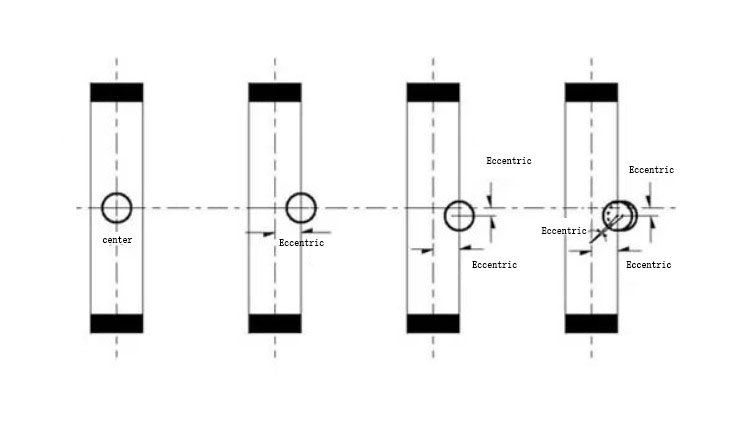Butterfly valve selection guide: How to choose between Center line-type butterfl
I. What is eccentric butterfly valve
(1)Center line-type butterfly valve
Structure: Stem axis, butterfly plate centre and valve body centre are coaxial.
Advantages: simple structure, low cost, soft seal (rubber / PTFE) can achieve zero leakage.
Applicable scenes: water treatment, HVAC and other non-corrosive media in the low-pressure system.
(2)Single-eccentric center butterfly valve
Structure: The stem axis deviates from the centre of the butterfly plate, dispersing the extrusion of the upper and lower ends of the butterfly plate. The centre of the valve stem deviates from the pipeline axis (eccentricity distance e≈5%DN).
Advantages: less extrusion than concentric butterfly valve, moderate cost.
Applicable scenes: need to slightly improve the seal but the budget is limited to the room temperature and low pressure working conditions.
(3)Double-eccentric center butterfly valve
Structure: The stem axis deviates from the centre of the butterfly plate and the centre of the valve body at the same time, and the butterfly plate quickly disengages from the valve seat after opening. The valve stem deviates from the pipeline axis (structural eccentricity) and the valve stem deviates from the centre of the sealing surface (geometric eccentricity).
Advantages: Reduced squeezing and scraping, can be fitted with metal valve seats, improved temperature resistance, suitable for medium pressure systems.
Applicable scenes: petrochemical, electric power and other medium temperature and medium pressure working conditions, need to open and close the system frequently.
(4)Three-eccentric center butterfly valve
Structure: Increase the sealing surface inclined cone design on the basis of double eccentric to achieve face sealing.
Advantages: hard seal is resistant to high temperature and high pressure, stable sealing performance and long life.
Applicable scenes: harsh working conditions (high temperature and high pressure, corrosive media), such as chemical industry, energy field.

II. Selection rules
(1)Medium
Clear water or gas: priority concentric butterfly valve. Containing particles of media: priority three eccentric butterfly valve. High temperature steam: priority double eccentric metal hard seal. Strong corrosive acid: priority three eccentric + Hastelloy butterfly valve.
(2)Working condition parameters
Pressure > 4MPa: mandatory selection of three eccentric structure. High-frequency opening and closing: priority double eccentric butterfly valve or three eccentric butterfly valve. Low pressure and normal temperature: priority selection of concentric butterfly valve. Medium pressure and medium temperature: select double eccentric butterfly valve. High pressure and high temperature: three eccentric butterfly valve.
(3)Economic analysis
Short-term projects: give priority to concentric or single eccentric butterfly valve. More than ten years long cycle: choose three eccentric butterfly valve.
(4)Drive mode
Manual control: single eccentric or double eccentric butterfly valve (moderate operating torque). Automation system: choose three eccentric butterfly valves (precise positioning requirements).
(5)Seal requirements
Soft seal zero leakage: priority concentric or double eccentric butterfly valve (rubber or PTFE valve seat). Hard sealing high temperature resistance: choose double eccentric butterfly valve or triple eccentric butterfly valve (metal or special alloy valve seat).

 Tel:+86-23-67956606
Tel:+86-23-67956606 Email:
Email:
